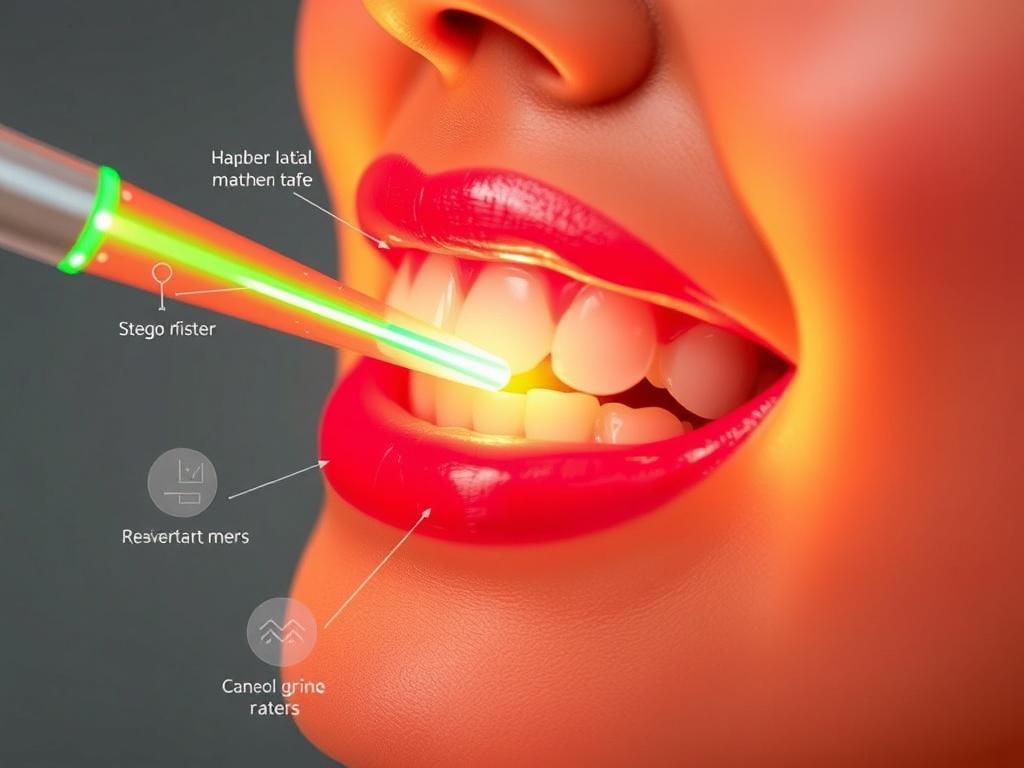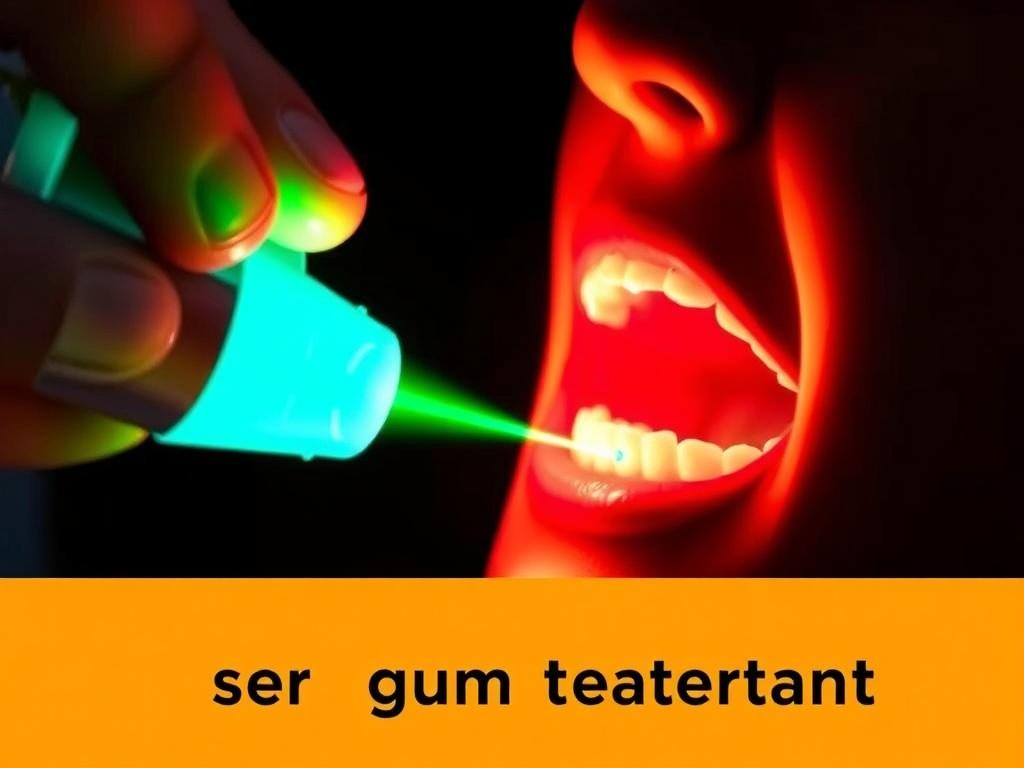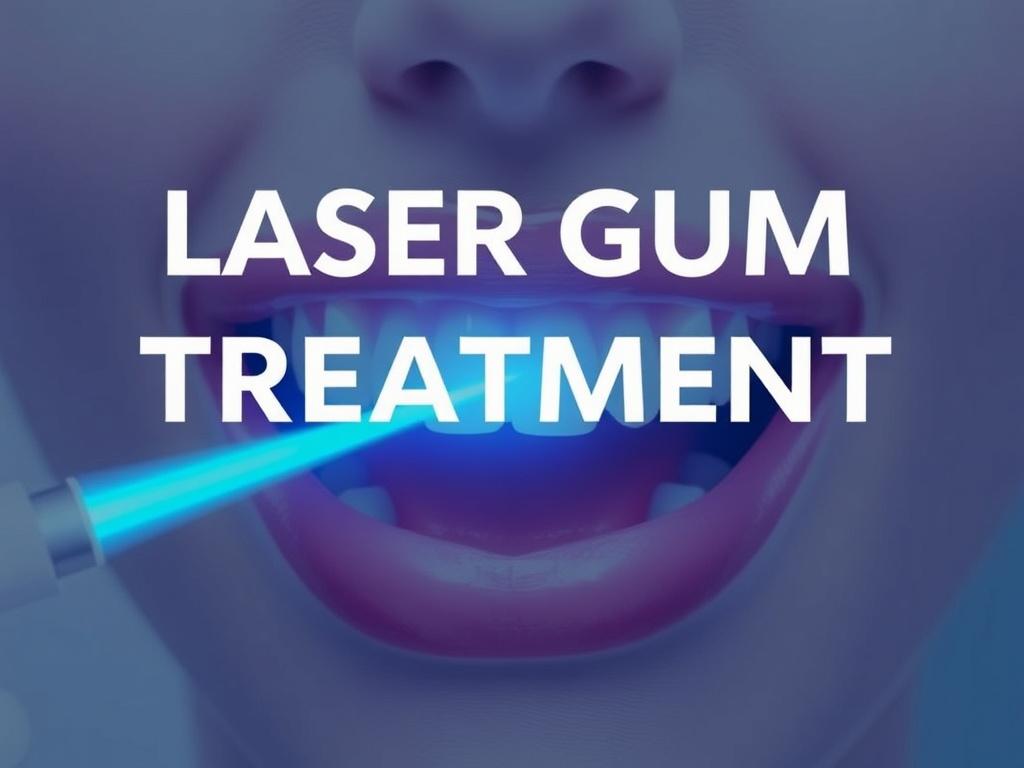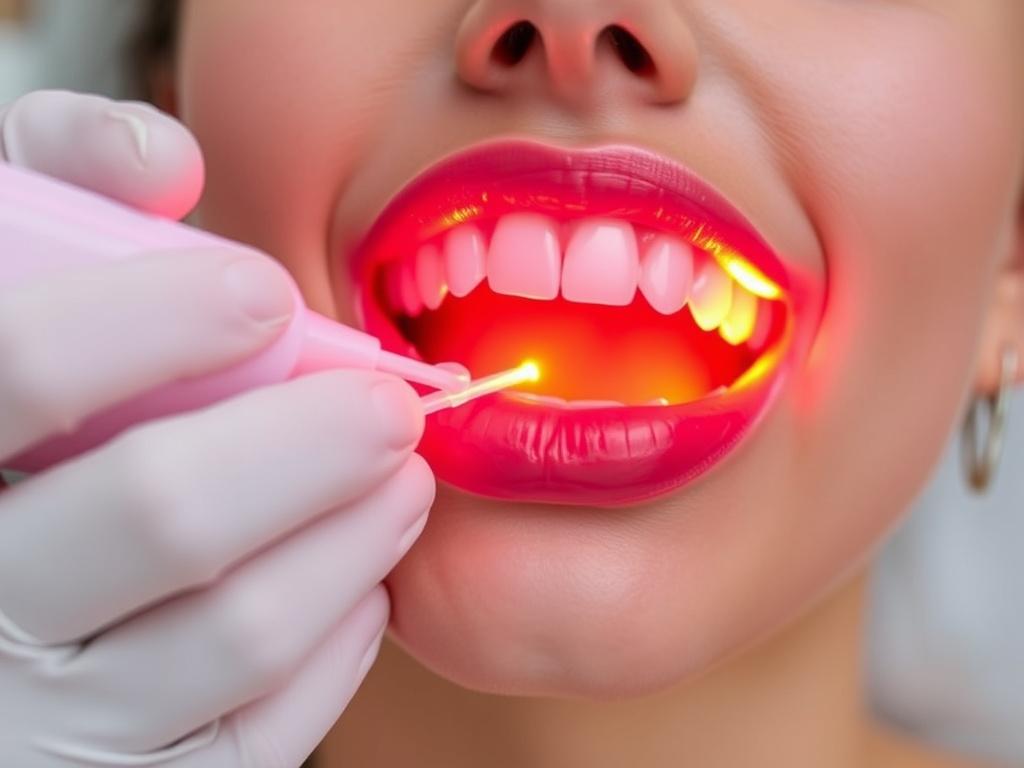When it comes to maintaining a healthy and beautiful smile, the health of your gums is just as important as the condition of your teeth. Gum disease, such as gingivitis and periodontitis, affects millions of people worldwide, and traditional treatments like deep cleaning or surgery have often been uncomfortable and time-consuming. Fortunately, advances in dental technology have introduced laser gum treatment, a cutting-edge procedure that offers numerous benefits for patients looking to restore their gum health quickly and comfortably. In this article, we will explore the many advantages of laser gum treatment, diving into how it works, what to expect from the procedure, and why it might be the right choice for you.
Содержание
- 1 What Is Laser Gum Treatment?
- 2 How Laser Gum Treatment Works
- 3 Key Benefits of Laser Gum Treatment
- 4 Who Is a Good Candidate for Laser Gum Treatment?
- 5 How to Prepare and Care for Laser Gum Treatment
- 6 Comparing Laser Gum Treatment to Traditional Methods
- 7 Frequently Asked Questions About Laser Gum Treatment
- 8 The Future of Laser Gum Therapy
What Is Laser Gum Treatment?

Laser gum treatment is a minimally invasive dental procedure that uses concentrated beams of light to target and remove diseased gum tissue and bacteria without harming surrounding healthy tissue. Unlike traditional scalpel techniques, the laser allows dentists to clean and shape the gums with precision and less discomfort. There are several types of lasers used in periodontal therapy, but all share the same goal: promoting gum healing and regenerating healthy gum tissue.
This advanced treatment is often used to manage gum disease, treat infected pockets beneath the gums, and even assist in cosmetic gum reshaping. The precision of the laser means there is typically less bleeding, reduced swelling, and faster recovery, making it an attractive option for many patients.
How Laser Gum Treatment Works

The process of laser gum treatment begins with a thorough examination and diagnosis by your dentist or periodontist. They will identify the extent of gum disease or gum damage and determine if laser therapy is suitable. During the procedure, the laser device emits a concentrated light beam that targets bacteria and diseased cells beneath the gums. It gently removes infected tissue and promotes the reattachment of healthy gums to the teeth.
Because the laser cauterizes as it works, patients often experience minimal bleeding. The heat generated by the laser also helps sterilize the treatment area, reducing the likelihood of infection. Depending on the severity of the condition, laser gum treatment might be completed in a single session or over multiple visits.
Steps Involved in Laser Gum Treatment
- Initial consultation and diagnosis
- Local anesthesia administration
- Laser cleaning and removal of diseased tissue
- Cauterization and sterilization of the gums
- Post-treatment care and follow-up visits
Each of these steps is designed to ensure that the patient experiences as little discomfort as possible while maximizing healing and tissue regeneration.
Key Benefits of Laser Gum Treatment
Many patients who have undergone laser gum treatment rave about its benefits. Let’s explore the primary advantages that make this treatment stand out compared to traditional methods.
1. Less Pain and Discomfort
One of the biggest reasons patients prefer laser gum treatment is the reduced pain associated with the procedure. Lasers are precise and cause less trauma to tissues, resulting in decreased swelling and sensitivity after treatment. Many people report feeling minimal discomfort, and some don’t require any pain medication afterward.
2. Faster Healing Time
Because lasers gently remove diseased tissue without cutting healthy gums, the healing process is significantly quicker. The laser’s ability to cauterize blood vessels means less bleeding during and after the procedure, which also contributes to faster recovery. Within days, patients generally see improvements and can resume normal activities almost immediately.
3. Reduced Risk of Infection
The sterile nature of laser treatment is a huge plus. The laser’s heat effectively kills bacteria in the gum pockets, reducing the likelihood of infection post-procedure. Traditional surgical treatments can leave open wounds vulnerable to bacteria, but with laser therapy, the treated area is sealed off more efficiently.
4. Precision and Minimal Damage to Healthy Tissue
Unlike traditional scalpel surgery, where nearby healthy tissues might be inadvertently damaged, laser gum treatment is extremely precise. The dentist can focus on diseased parts of the gum without disturbing the surrounding areas. This preservation of healthy tissue not only makes the procedure safer but also supports better long-term oral health.
5. Effective Treatment for Various Gum Conditions
Laser therapy is not limited to just one gum problem. It is versatile enough to treat a range of conditions from mild gingivitis to more severe periodontitis. Additionally, it can be used for soft tissue reshaping around the gums, enhancing both health and appearance.
6. Less Bleeding and Swelling
Because the laser seals blood vessels during treatment, patients experience minimal bleeding compared to traditional methods. This sealing effect also helps to reduce swelling, making the post-procedure recovery more comfortable.
Summary Table of Benefits
| Benefit | Description | Why It Matters |
|---|---|---|
| Less Pain and Discomfort | Laser treatment minimizes trauma to gums. | Enhances patient comfort and reduces need for painkillers. |
| Faster Healing Time | Gentle removal of tissue and cauterization speeds recovery. | Gets you back to daily life sooner without long downtime. |
| Reduced Risk of Infection | Laser heat sterilizes the treatment area. | Prevents complications and promotes healthier gums. |
| Precision and Minimal Damage | Targets only diseased tissue, preserving healthy gums. | Ensures safer procedures and better gum preservation. |
| Effective on Multiple Conditions | Treats gingivitis, periodontitis, and cosmetic gum issues. | Versatile approach to improving gum health. |
| Less Bleeding and Swelling | Cauterizes blood vessels during treatment. | More comfortable recovery with minimal visible trauma. |
Who Is a Good Candidate for Laser Gum Treatment?
Not everyone with gum issues is automatically suited for laser gum treatment, but many people can benefit from it. Patients with early-stage gum disease who want to avoid surgery and individuals with sensitivity issues often find laser therapy appealing. Additionally, those seeking cosmetic improvements to their gumline without invasive procedures are excellent candidates.
If you have more advanced periodontitis, your dentist will carefully evaluate whether laser treatment alone is appropriate or if it should be combined with other therapies. It is always crucial to get a professional diagnosis and discuss treatment options tailored to your specific needs.
Questions to Ask Your Dentist
- Is laser gum treatment right for my condition?
- What type of laser technology do you use?
- How many treatment sessions will I need?
- What should I expect during and after the procedure?
- Are there any risks or side effects?
- What post-care steps should I follow to aid healing?
Asking these questions will help you feel more confident and informed about the treatment path ahead.
How to Prepare and Care for Laser Gum Treatment

Before your laser gum treatment, your dentist might recommend scaling and root planing to remove plaque buildup. Avoid smoking and maintain good oral hygiene habits to support the procedure’s success. On the day of treatment, wearing comfortable clothes and arranging for someone to accompany you can help ease any anxiety.
After the treatment, following your dentist’s care instructions is vital. These usually include gentle brushing, avoiding hard or spicy foods, and possibly using prescribed mouth rinses to promote healing and prevent infection. Regular follow-ups ensure your gums continue to heal and maintain their improved condition.
Post-Treatment Care Tips
- Brush gently around the treated area.
- Avoid tobacco and alcohol.
- Stick to a soft diet for a few days.
- Use any prescribed mouthwash as directed.
- Attend follow-up appointments diligently.
- Report any unusual pain or swelling to your dentist immediately.
Proper care speeds recovery and maximizes the benefits of laser gum treatment.
Comparing Laser Gum Treatment to Traditional Methods
Many wonder how laser gum treatment stacks up against conventional procedures like scaling and root planing or gum surgery. Here’s a comparison to help clarify.
| Aspect | Laser Gum Treatment | Traditional Treatment |
|---|---|---|
| Pain and Discomfort | Minimal, often needs only local anesthesia | More invasive, may require sedation and lead to soreness |
| Healing Time | Faster, usually days to a week | Longer, possibly several weeks |
| Bleeding | Least bleeding due to cauterization | More bleeding during and after procedure |
| Risk of Infection | Lower due to laser sterilization | Higher, open wounds susceptible to bacteria |
| Procedure Time | Often shorter sessions | Longer, especially for surgeries |
| Tissue Preservation | Highly precise with minimal damage | Less precise, may damage healthy gums |
Clearly, laser gum treatment offers a modern, gentler, and more efficient alternative to traditional gum therapies, making it a popular choice among patients and dental professionals alike.
Frequently Asked Questions About Laser Gum Treatment
Is laser gum treatment painful?
Most patients experience minimal pain, often described as mild discomfort. Local anesthesia is used to numb the area during the procedure.
How long does the treatment take?
Treatment sessions typically last between 30 minutes to an hour, depending on severity.
Are there any side effects?
Side effects are usually minor and may include mild swelling or tenderness for a few days.
Is laser gum treatment covered by insurance?
Coverage varies by provider and policy; it’s best to check with your insurance company and dental office.
Can it prevent future gum disease?
While laser treatment removes existing infection, maintaining good oral hygiene and regular dental checkups are crucial to prevent recurrence.
How soon will I notice improvements?
Most patients observe healthier gums and less bleeding within a few days post-treatment.
The Future of Laser Gum Therapy
As dental technology continues to evolve, laser gum treatment is becoming even more sophisticated. Research into new laser types and combinations with regenerative therapies promises even better outcomes with less discomfort. With a growing emphasis on minimally invasive and patient-friendly procedures, lasers are likely to play a dominant role in periodontal care going forward.
Moreover, as awareness grows about the link between gum health and overall wellness—such as heart health and diabetes control—patients are increasingly proactive in seeking the best treatments. Laser gum therapy fits perfectly into this modern approach by offering efficient and effective solutions for maintaining gum health.
Conclusion
Laser gum treatment represents a breakthrough in the fight against gum disease, combining advanced technology with patient-centered care. From its precision and minimal discomfort to faster healing times and reduced infection risk, it offers compelling advantages over traditional gum treatments. Whether you’re dealing with early-stage gingivitis or more advanced periodontal conditions, laser therapy provides a versatile and effective option for restoring your gum health. By embracing this modern approach, you can enjoy a healthier mouth, a more confident smile, and a comfortable dental experience overall. If you’re considering gum treatment, talk to your dentist about whether laser gum treatment is right for you—and take a confident step toward better oral health.







